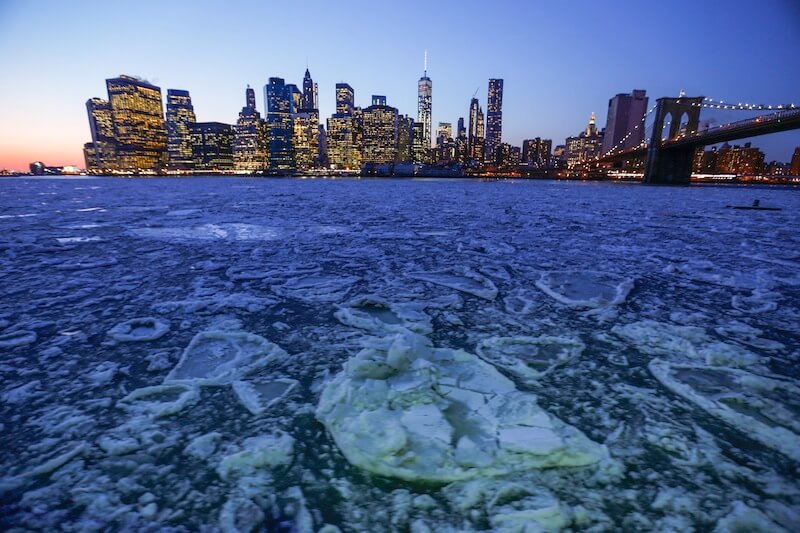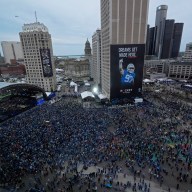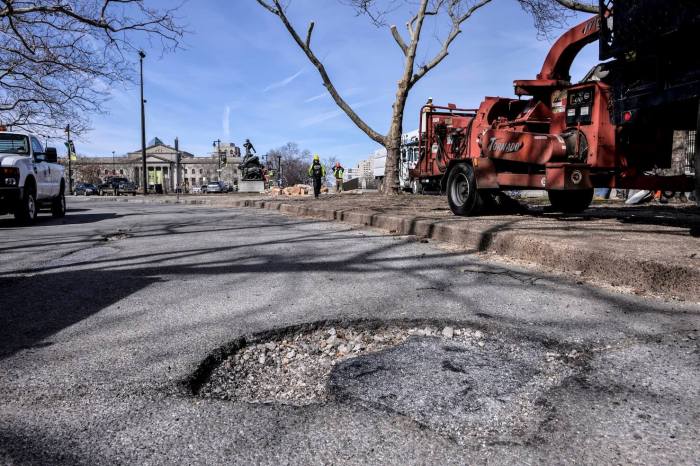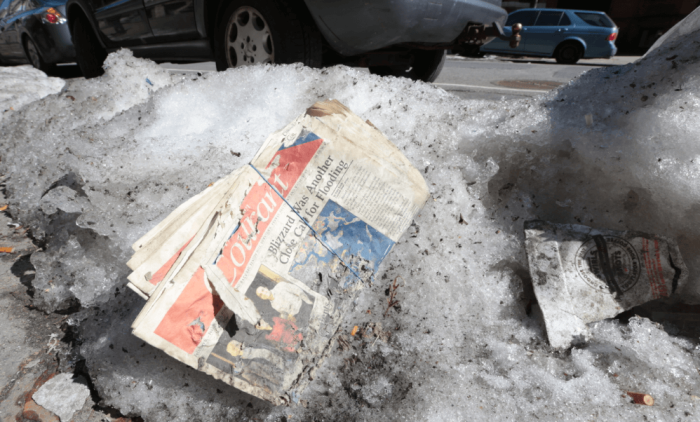The frigid temperatures that swept through New York this winter might have been a blessing in disguise for the city’s underground water infrastructure but more of a challenge for the electrical system. Main breaks in particularly have been known to be problematic across the city given how many different utility lines and services run beneath New Yorker’s feet — including wiring tied to a spate of manhole explosions. While the winter might freeze any number of service pipes into people’s homes, damage to the water mains that feed those pipes have at, best cut, off water service and flood the streets and at worst, created giant sinkholes, the latter at great cost to the city. “We tend to see more issues when we have really cold weather quickly followed by a warming up,” Jim Roberts, the city’s deputy commissioner for its water and sewer systems with the Department for Environmental Protection. “This year has been a steadier deep freeze.” Recently released numbers from City Hall report the number of water main breaks decreased in the first four months of fiscal 2015 to 76 from 96 the year before.
Roberts said water mains — which are susceptible to any number of things that can lead to breaks including weather, changes in water pressure and the materials the pipes are made of — mostly survived the last few months unscathed, thanks to the cold. A water main break in January in Hell’s Kitchen flooded the streets as the temperature hit the mid-teens late Jan. 23. Days earlier, water flowed through Greenwich Village streets after a 12-inch pipe exploded midday on Jan. 15. “There seems to be a sort of global disappointment that we don’t have the world coming apart at the seams,” Roberts joked. “We’re sorry to disappoint everybody.” City statistics also show a slight rise in main breaks in the last three years. The DEP reported 513 breaks in fiscal year 2014, an increase from 406 and 370 in 2013 and 2012.
Even so, Roberts said the overall long-term trend has still seen a steady decline since 2004, which saw 591. And those numbers, he argued, are still below national standards.
One of last year’s big breaks last year was on Houston Street, right in front of Katz’s Delicatessen in May. The springtime break didn’t appear to be weather related, but the damage was extensive. A sinkhole formed. Thirteen buildings around the busy block had no water for hours. “It was a nightmare,” said Jake Dell, who co-owns the classic deli that was at the epicenter when the 20-inch pipe installed in 1959 burst.
The restaurant managed to stay open as 3 feet of water in the basement turned into mud from crack in the wall and thousands of dollars worth of merchandise and equipment were damaged.
Even as the cold might have saved the city from water pouring through city streets, the combination of salt and melting snow trickling into exposed wires proved more problematic this winter.
Con Edison, which manages the city’s electrical system, reported more than 200 smoke, fire and explosion incidents so far in 2015.
Brooklyn has been hit particularly hard with a series of early morning exploding manholes, including over a dozen in Greenpoint in early March and at least one in February that sent a Park Slope man to the hospital. Robert Adamski, an engineering consultant and former DEP deputy commissioner, explained that most New Yorkers rarely think about everything that runs under their feet.
“It’s out of sight, out of mind for most people,” Adamski said. “Until it becomes a problem.”
For Dell, however, problems Katz’s faced after the damage was done are part of the deal.
“The city is what it is,” Dell said. “You deal with bureaucracy, construction and everything else. That’s just the cost of doing business in the city.”
While manholes explode, city’s water mains survive winter freeze

Getty Images


















